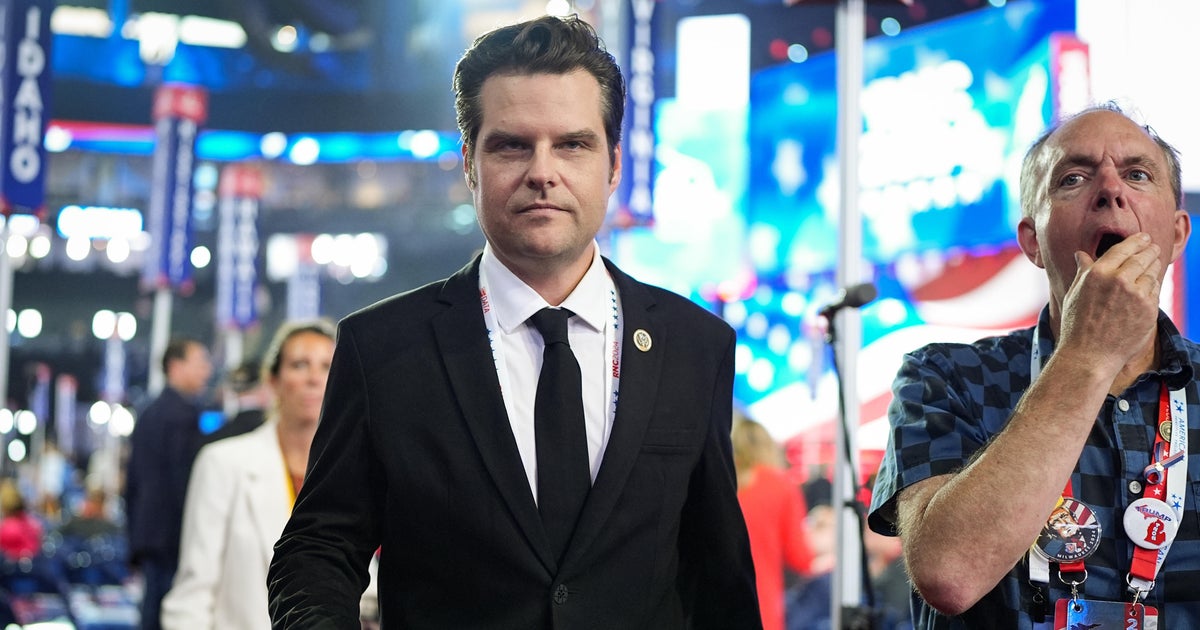Group of House members want a select committee to investigate UAPs
Washington — A group of House members are calling on Speaker Kevin McCarthy to form a select committee tasked with investigating the federal government's response to unidentified anomalous phenomena, known as UAPs or UFOs, further deepening Congress' quest for information about the mysterious objects.
The request from the three Republicans and one Democrat follows a hearing held by the House Oversight Committee's national security subcommittee Wednesday that explored UAPs. A former military intelligence officer-turned-whistleblower and two former pilots who had firsthand experience with the phenomena appeared before lawmakers.
"By establishing a Select Committee to investigate the United States government's response to UAPs, the 118th Congress will have an opportunity to work through more significant issues of government oversight (including lack of budget transparency, overclassification, and unwillingness to respond to Congressional oversight), on a discrete issue that is readily understandable by the public, and which is of grave concern to our nation," the lawmakers told McCarthy in a letter sent Thursday.
The four signers are Republican Reps. Matt Gaetz of Florida, Anna Paulina Luna of Florida, and Tim Burchett of Tennessee, and Democratic Rep. Jared Moskowitz of Florida.
The lawmakers said the select committee with the power to issue subpoenas — operating separate from a standing House committee — should be established to collect information from the Defense Department and other entities for the public's benefit and discharge Congress's constitutional, legislative and oversight roles.
"This issue is much bigger than the news cycle: it represents a confluence of concerning governmental actions that indicates a lack of forthrightness on the part of the Pentagon and intelligence community," they wrote. "No governmental program, no matter how sensitive, can be outside the view of Congress. And yet, the Executive Branch routinely redacts and entirely withholds information in other domains that we are entitled to, and is doing so here."
UAP, the government's name for objects previously known as UFOs, are considered objects detected in the air, sea and space that can't be identified. As of the end of August 2022, there have been more than 500 UAP sightings over the last 17 years, according to a January report from the Office of the Director of National Intelligence, and many were reported by U.S. Navy and Air Force aviators and operators.
Sean Kirkpatrick, director of the Pentagon's All-domain Anomaly Resolution Office, or AARO, which investigates UAP incidents, told a NASA study group in May that the office "has found no credible evidence thus far of extraterrestrial activity, off-world technology, or objects that defy the known laws of physics."
But during Wednesday's hearing, David Grusch, the former intelligence officer, told lawmakers he was told of a "multi-decade UAP crash retrieval and reverse-engineering program" by the government during the course of his work at a Pentagon office investigating the encounters.
He also accused executive branch agencies of withholding information about the objects.
Ryan Graves and David Fravor, former Navy pilots, also told members of the House subcommittee about their experiences with the objects while flying military aircraft.
Graves, an F-18 pilot, described the objects as "dark grey or black cubes … inside of a clear sphere, where the apex or tips of the cubes were touching the inside of that sphere" and said UAP encounters were "not rare or isolated."
Fravor, meanwhile, recounted to Congress a 2004 encounter while flying an F-18 fighter jet on a training mission off the coast of San Diego. He and another pilot spotted a "small, white Tic-Tac shaped object" hovering above the water before it quickly climbed roughly 12,000 in the air, he said. The object accelerated and disappeared in front of the aircraft, and was then detected by Navy sensors about 60 miles away less than a minute later, Fravor recalled. The object was captured in what is known as the "Tic Tac" video.
Stefan Becket contributed to this report.



